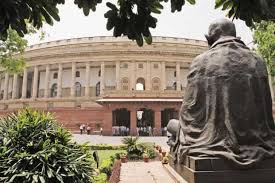Child Labour: Act now, end child labour”
“Let us sacrifice our today so that our children can have a better tomorrow” – Dr. A. P. J. Abdul Kalam

The UN General Assembly had unanimously adopted a resolution to declare the year 2021 as the international year for the elimination of child labour. It urged the international community to step up for the cause. According to the Internation Labour Organisation estimates, there has been a 38% decline in child labour globally between 2000 and 2006. Over the past 20 years, almost 100 million children have been removed from child labour. However, there are still 160 million children are in child labour, who need help and support.The theme of 2021, “Act Now: End Child Labour” presents an opportunity to drive actions, share experiences and propel momentum to end child labour by 2025, and forced labour, human trafficking, and modern slavery by 2030.
When a child or an adolescent engages in a hazardous activity that may be threatening to their life or health, it is termed child labour. The International Labour Organization defines ‘child labour’ as a work that deprives children of their childhood, their potential, dignity, and is harmful to physical and mental development. Such activities also deprive them of the opportunity to continue their education.
However, not all the activities or work done by children can be termed child labour. A work that does not affect health and personal development or interfere with a child’s schooling, is generally regarded as being something positive. These include helping their parents around the home, assisting in a family business, or earning pocket money outside school hours and during school holidays.
According to International Labour Organization ( ILO) these kinds of activities contribute to children’s development, adds skills and experiences while also helping them to prepare to be productive members of society during their adult life.However, one must be careful in calling a work ‘child labour’ as it is dependent on the child’s age, time and hours of work performed, and the condition in which the child works.
Child labour may take place for several reasons, for eg, poor financial condition, weak education system, customs, gender issues, child trafficking, and so on.According to International Labour Organizationstatistics, 70% of children in child labour work in agriculture, and a third of children in child labour are completely outside the education system, while the ones who attend, perform badly.The solution to child labour is legal commitment, promotion of decent work for adults and younger people, social protection, access to education, and addressing of child-related issues. Different nations have been working to eradicate this bane from their land.In India, the government has formulated rules, and platforms to govern, monitor, and prevent activities related to child labour.
In India, legal frameworks like the Child Labour Amendment (Prohibition and Regulation) Act, 2016, prohibit the engagement of children, and adolescents in all hazardous occupations and processes.Deepak, a school dropout, worked in a stone quarry. The Ministry of Labour and Employment rescued Deepak in 2019. He was timely identified and rescued by the NCLP survey team which also convinced his parents to enroll him in a special training centre under the National Child Labour Project scheme. Deepak completed his schooling with flying colours and is now pursuing an engineering course.
The National Child Labour Project (NCLP), a central sector scheme aims to eliminate all forms of child labour, contribute to the withdrawal of all adolescent workers from hazardous occupations, and raise awareness among stakeholders and target communities.The Government of India through the Ministry of Labour and Employment funds the scheme. The scheme focuses on child workers below the age of 14, adolescent workers below the age of 18, and families of child workers in the identified target area.The purpose of the scheme is to create an environment that motivates the children to enroll in schools and refrains from working in hazardous situations. Further, it also seeks to provide alternative opportunities to improve the income levels of families of child labour.
The Platform for Effective Enforcement for No Child Labour (PENCiL) is an effective enforcement mechanism that contributes towards the goal of the government to achieve a society free of child-labour.It provides a platform to file complaints against cases of child labour. Since the launch of PENCiL, 1,96,761 children have been identified as child labour.
In an attempt to curb child labour, the PENCiL portal connects the central government through the help of five components- complaint corner, National Child Labour Project, convergence, child tracking, and State government.
When a complaint is filed, the Nodal officer checks and verifies the genuineness of the complaint, and takes appropriate action. Under the convergence stage, rehabilitation of the rescued child is done. A child aged between 5 to 8 is put under Sarv Sikhsha Abhiyan school; a child between the age of 8 to 14 is put under National Child Labour Project training centre, and the rescued adolescent (14-18 years) is put under a skill development centre.
Every district has a National Child Labour Projectsociety under which a project director works. The project director updates information on the PENCiL portal on behalf of the National Child Labour Projectsociety. The PENCiL portal also provides access to State Resource Centre (SRC) which monitors the implementation of the Act. It also tracks the complaints filed on the portal.All of these components enable the central government to monitor all the progress and track the activity of National Child Labour Project society through the PENCiL portal.The Government of India has been taking proactive steps to tackle the problem of child labour through strict enforcement of legislative provisions along with simultaneous rehabilitative measures.
_____________________________________________________
From – Dr Deepak Kohli,Joint Secretary,Environment, Forest and Climate Change Department ,Government of Uttar Pradesh ,5/104 Vipul Khand Gomti Nagar Lucknow- 226010 ( Mobile : 9454410037)





